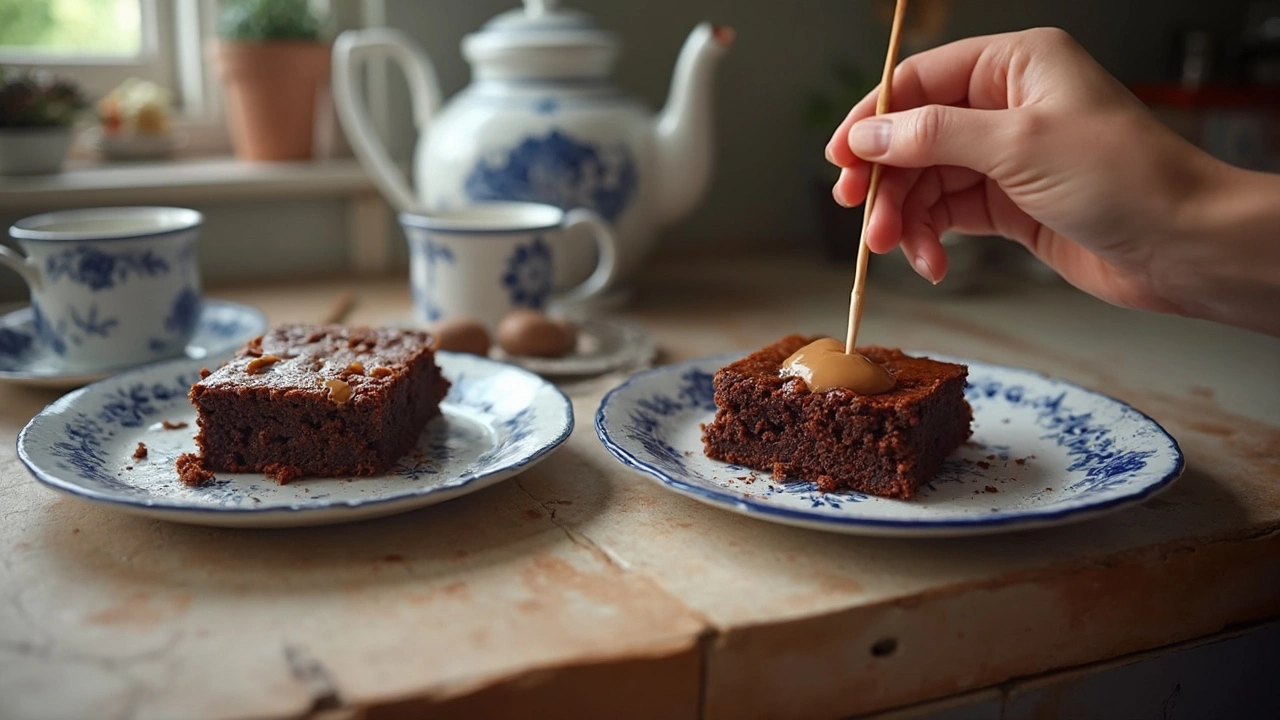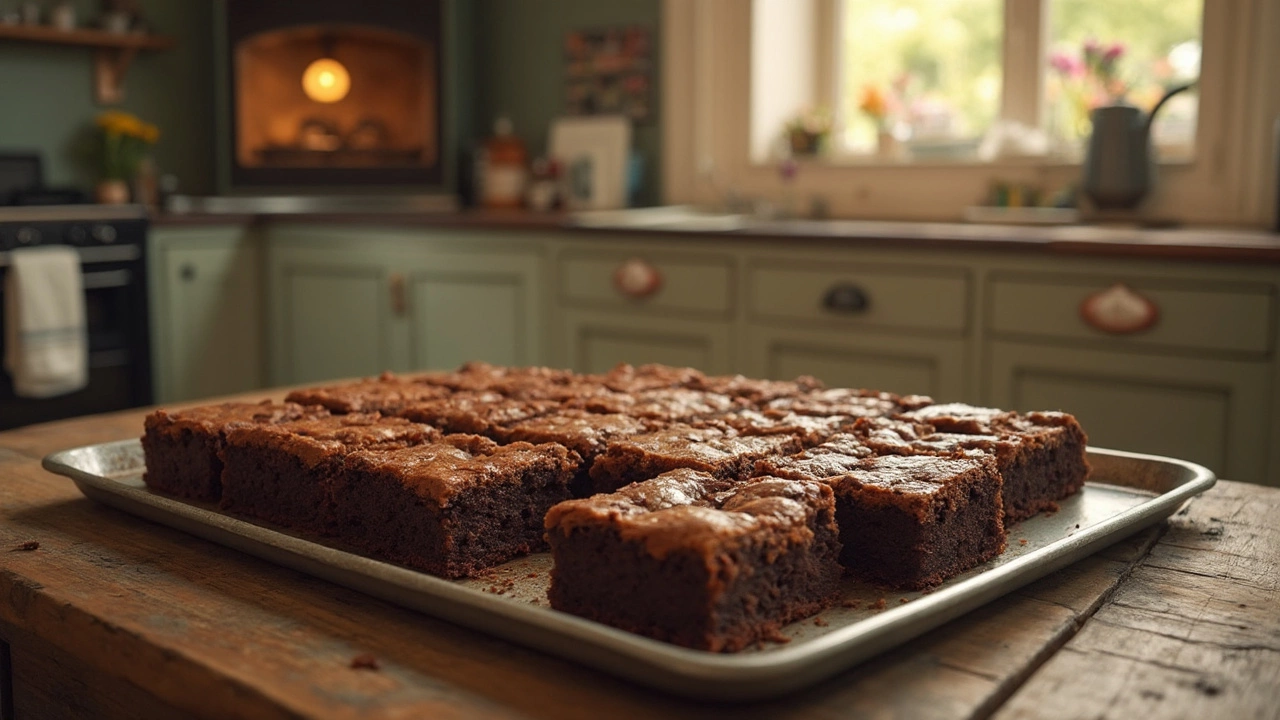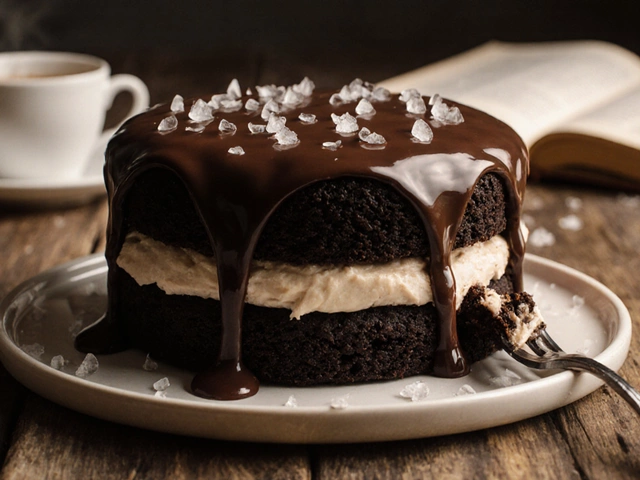Ever pulled a tray of brownies out of the oven, hoping for a fudgy middle, only to find they've turned into chocolate bricks? You're not alone. So many people make this mistake, mostly because brownies look underdone even when they're ready. Overbaking is the number one reason brownies lose that chewy, gooey bite everyone wants.
The best brownies are all about timing and paying attention to small details. Your oven probably runs hotter or colder than you think, and even the pan you use makes a difference. Forget the old "stick a toothpick in and look for clean" trick—brownies should come out with a few moist crumbs on the tester, not totally clean. Stick around for some game-changing tips that help you nail that perfect brownie texture every time.
- Why Do Brownies Overbake So Easily?
- Spotting the Perfect Doneness
- Temperature, Timing, and Tricks
- Saving Brownies That Went Too Far
Why Do Brownies Overbake So Easily?
Brownies are one of those desserts that go from perfect to dry in a blink. It’s not just about leaving them a few minutes too long — there’s a bunch of small things that mess with the texture. Knowing these game-changers helps you avoid disappointment.
First off, brownies keep cooking after you pull them out of the oven because of carryover heat. The center might look underdone, but it firms up as it cools. Many people ignore this and wait until the whole pan looks set, which is too late. Even bigger issue? Your oven's actual temperature. Most home ovens have hot or cool spots, or just run off by up to 20°F. This means your timer is just a ballpark unless you’ve checked your oven’s real temp with an oven thermometer.
Pan choices matter more than most people expect. Glass pans heat slower and retain heat longer, so brownies can keep baking once out of the oven. Metal pans are more predictable, but thin ones can burn edges fast if you forget to check early.
Making sense of baking times? Here’s what throws everyone off:
- Baking times on recipes are only estimates. Your oven and pan type, brownie thickness, and even the mix of ingredients can change how fast your brownies bake.
- Mixing too much or baking at too high a temp can make brownies rise fast, then collapse and dry out.
- Opening the oven door a lot messes with the temp and throws off your bake.
Just to show how different factors stack up, here’s a quick look at how pan and oven stuff impacts brownies:
| Factor | Effect |
|---|---|
| Glass pan | Slower to heat, retains heat, more risk of overbaking after removed |
| Metal pan (dark) | Heats up brownies fast, edges bake quicker |
| Uneven oven temp | Parts of brownies may overbake while others are gooey |
| High baking temp | Brownies overbake on edges before center is done |
So, getting gooey brownies is not luck. It’s all about spotting those tiny details. Each little choice, from your oven’s quirks to your pan, can sneakily dry out your batch before you even realize it.
Spotting the Perfect Doneness
This is where brownie dreams either come true or fall flat. Don't just trust the timer! Your brownies could be ready five minutes sooner or later, depending on your oven, pan size, or even the weather (yep, humidity matters!). If you go by smell alone, you'll almost always end up with dry brownies. So, let’s get real about what to look for.
- The edges pull away from the pan slightly. That’s your first sign the brownies are almost there.
- The center looks set but still a bit soft—almost jiggly. If you gently shake the pan, you should see a little wobble but not gooey batter sloshing around.
- Skip the “clean toothpick” method. Instead, poke the middle with a toothpick or even a knife. If you see some moist crumbs sticking (not raw batter), they’re perfect. Brownies keep cooking after you pull them out, so don’t wait for a totally dry tester.
- Keep an eye on color. The top should be matte and slightly cracked, not shiny like batter.
Not sure how your batch lines up? Here’s a quick cheat sheet:
| Visual Sign | What It Means |
|---|---|
| Edges look dry, center looks set | Almost done, time to check for crumbs |
| Crumbs on toothpick (not wet batter) | Pull brownies, they're at their best |
| Toothpick comes out clean | They’re probably overbaked |
Remember, for brownies, underdone is actually closer to perfect than overdone. Don't be afraid to trust your eyes and a little bit of instinct.

Temperature, Timing, and Tricks
The real secret to perfect brownies is paying close attention to baking temperature and timing. If you're winging it, you'll almost always end up with dry edges or a rock-solid middle. Most box recipes and homemade instructions suggest an oven temperature of 350°F (177°C), and there's a good reason for that—it's hot enough to set the batter but not so high that it burns the outside before the inside cooks.
Here's something you might not know: most ovens actually run a bit hot or cold compared to what you set. A cheap oven thermometer is game-changing. Even five or ten degrees can mess up the texture.
- For gooey brownies, check them 5-7 minutes before the shortest baking time listed in your recipe.
- Use a metal pan for more even baking. Glass pans bake slower and can lead to overbaked edges.
- To test for doneness, stick a toothpick in the center—look for a few moist crumbs, not wet batter and not totally dry.
- If your oven heats unevenly, rotate the pan halfway through baking.
- Let brownies cool in the pan, but not for too long. Pull the whole slab out with the parchment as soon as they're cool enough to handle to stop them from overcooking in the hot pan.
You might be surprised how much a two-minute difference can make. Here’s a quick look at what usually happens at different baking times for an 8-inch square pan at 350°F:
| Baking Time (minutes) | Brownie Texture |
|---|---|
| 25-27 | Very gooey, almost molten, edges barely set |
| 28-30 | Creamy center, fudge-like, soft edges |
| 31-33 | Fully set, dense, chewy |
| 34+ | Cakey, overcooked, dry |
So, always set a timer, and don’t just trust your eyes. The sweet spot for moist, chewy brownies almost always falls just below what you think is "done." Trust the process and enjoy those rich, fudgy squares.
Saving Brownies That Went Too Far
If your brownies came out dry and crumbly, don’t panic. There are real ways to bring them back to life. Most people think overbaked brownies are a lost cause, but a few clever tricks can definitely help.
The quickest fix is to add moisture. Warm brownies in the microwave for just 10–15 seconds with a damp paper towel over the top. This lets the steam seep in and soften them up a bit. Another reliable hack: brush the tops with a little simple syrup or even milk. Let them sit for a few minutes to soak up the liquid.
If you want to get creative, try one of these ideas:
- Cut the brownies into small pieces and layer them in a parfait with whipped cream and berries. Nobody will notice they’re a little dry.
- Crumble overbaked brownies and use them as a topping for ice cream—extra chocolate never hurts.
- Serve warm with a scoop of ice cream or spoon on top some chocolate sauce or caramel. The heat and toppings help hide the dryness.
Thinking you’re the only one messing up? Actually, a recent home baking survey showed that nearly 60% of bakers admitted to overbaking desserts at least once in the past year. So you’re in good company.
| Rescue Method | Works Best When |
|---|---|
| Microwaving with damp towel | Brownies are just a bit dry around the edges |
| Brushing with syrup/milk | Brownies are dry but not rock hard |
| Parfait/ice cream toppings | Brownies are very dry or crumbly |
No matter how far your brownies have gone, it’s almost always possible to turn them into something tasty.





